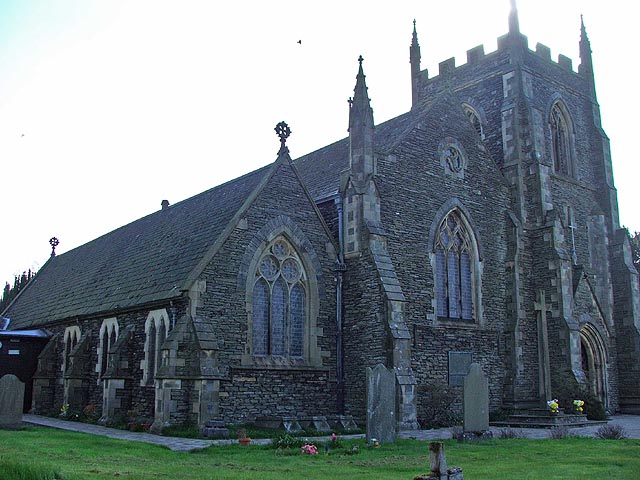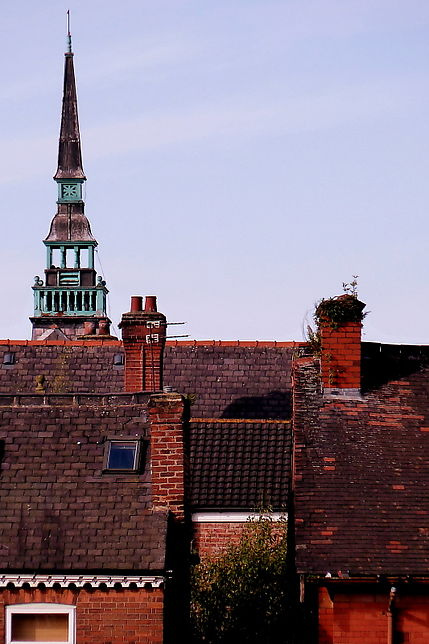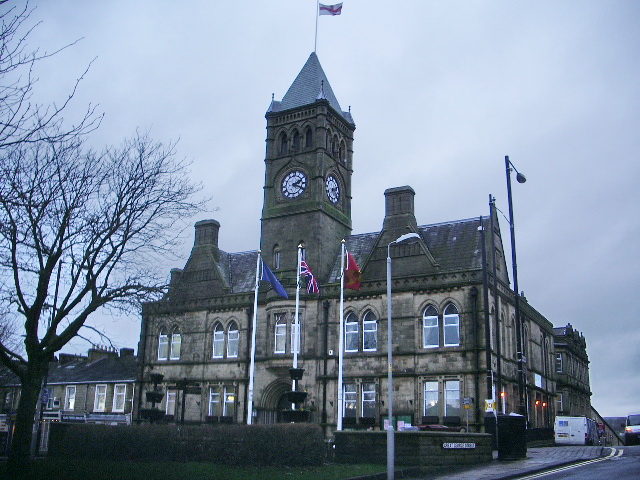|
John Hopkinson (priest)
John Henry Hopkinson (died 22 October 1957) was Archdeacon of Westmorland from 1931 until 1944. Personal life and early education The son of Sir Alfred Hopkinson, K.C.; nephew of John Hopkinson, the physicist and Edward Hopkinson, the electrical engineer; and brother of Austin Hopkinson, M.P., he was educated at Dulwich College and University College, Oxford. He died on 22 October 1957. Career He was a Lecturer in Greek at Birmingham University then Warden of Hulme Hall, Manchester and a Lecturer in Archaeology at the University of Manchester from 1904 to 1914 before his ordination in 1914.'' Crockford's Clerical Directory''; p 632: Oxford, OUP 19129 Then he served as a Private in the RAMC during World War I. He held incumbencies at Holy Trinity Church, Colne; Christ Church, Moss Side; St Oswald, Burneside and Christ Church, Cockermouth. He was also Diocesan Organiser of Religious Education and Examining Chaplain to the Bishop of Carlisle from 1928 to 1944. Notes ... [...More Info...] [...Related Items...] OR: [Wikipedia] [Google] [Baidu] |
Archdeacon Of Westmorland And Furness
The Archdeacon of Westmorland and Furness is a senior ecclesiastical officer within the Diocese of Carlisle. As such he or she is responsible for the disciplinary supervision of the clergy within its four rural deaneries: Barrow, Windermere, Kendal and Furness. The archdeaconry of Westmorland was erected by Order-in-Council of 10 August 1847 from the Archdeaconry of Richmond, but that Order did not come into effect until Hugh Percy (Bishop of Carlisle) died on 5 February 1856 (because he did not consent to the changes to his diocese). The Archdeaconry of Furness was erected by further Order-in-Council in 1884; they were subsequently merged to form the current archdeaconry of Westmorland and Furness. The incumbent is Vernon Ross. Archdeacons of Westmorland and of Westmorland and Furness *1856–January 1865 (ret.): Robert Evans (first archdeacon) *1865–25 July 1896 (d.): John Cooper, Vicar of Kendal *1896–1901 (res.): John Diggle, Vicar of Mossley Hill until 1897 *19 ... [...More Info...] [...Related Items...] OR: [Wikipedia] [Google] [Baidu] |
Oxford
Oxford () is a city in England. It is the county town and only city of Oxfordshire. In 2020, its population was estimated at 151,584. It is north-west of London, south-east of Birmingham and north-east of Bristol. The city is home to the University of Oxford, the oldest university in the English-speaking world; it has buildings in every style of English architecture since late Anglo-Saxon. Oxford's industries include motor manufacturing, education, publishing, information technology and science. History The history of Oxford in England dates back to its original settlement in the Saxon period. Originally of strategic significance due to its controlling location on the upper reaches of the River Thames at its junction with the River Cherwell, the town grew in national importance during the early Norman period, and in the late 12th century became home to the fledgling University of Oxford. The city was besieged during The Anarchy in 1142. The university rose to dom ... [...More Info...] [...Related Items...] OR: [Wikipedia] [Google] [Baidu] |
Henry Williams (bishop)
Henry Herbert Williams (19 December 1872 – 29 September 1961) was an English clergyman who served as Bishop of Carlisle. Williams was the elder son of Rev. John Williams, Vicar of Poppleton. He was educated at St Peter's School, York and The Queen's College, Oxford. He began his ministry in 1900 as a tutor and lecturer in philosophy at Hertford College, Oxford and in 1913 he became Principal of St Edmund Hall, Oxford. From 1920 to 1941 he was Bishop of Carlisle. He died on 29 September 1961.'' Obituary Rt. Rev. H. H. Williams Former Bishop Of Carlisle'' The Times ''The Times'' is a British daily national newspaper based in London. It began in 1785 under the title ''The Daily Universal Register'', adopting its current name on 1 January 1788. ''The Times'' and its sister paper ''The Sunday Times'' (fou ... Saturday, 30 September 1961; p. 10; Issue 55200; col E References External links * * {{DEFAULTSORT:Williams, Henry Herbert 1872 births Cler ... [...More Info...] [...Related Items...] OR: [Wikipedia] [Google] [Baidu] |
Chaplain
A chaplain is, traditionally, a cleric (such as a Minister (Christianity), minister, priest, pastor, rabbi, purohit, or imam), or a laity, lay representative of a religious tradition, attached to a secularity, secular institution (such as a hospital, prison, Military organization, military unit, intelligence agency, embassy, school, labor union, business, Police, police department, fire department, university, sports club), or a private chapel. Though originally the word ''chaplain'' referred to representatives of the Christian faith, it is now also applied to people of other religions or philosophical traditions, as in the case of chaplains serving with military forces and an increasing number of chaplaincies at U.S. universities. In recent times, many lay people have received professional training in chaplaincy and are now appointed as chaplains in schools, hospitals, companies, universities, prisons and elsewhere to work alongside, or instead of, official members of the clergy ... [...More Info...] [...Related Items...] OR: [Wikipedia] [Google] [Baidu] |
Religious Education
In secular usage, religious education is the teaching of a particular religion (although in the United Kingdom the term ''religious instruction'' would refer to the teaching of a particular religion, with ''religious education'' referring to teaching about religions in general) and its varied aspects: its beliefs, doctrines, rituals, customs, rites, and personal roles. In Western and secular culture, religious education implies a type of education which is largely separate from academia, and which (generally) regards religious belief as a fundamental tenet and operating modality, as well as a prerequisite for attendance. The secular concept is substantially different from societies that adhere to religious law, wherein "religious education" connotes the dominant academic study, and in typically religious terms, teaches doctrines which define social customs as "laws" and the violations thereof as "crimes", or else misdemeanors requiring punitive correction. The free choice of r ... [...More Info...] [...Related Items...] OR: [Wikipedia] [Google] [Baidu] |
Secretary
A secretary, administrative professional, administrative assistant, executive assistant, administrative officer, administrative support specialist, clerk, military assistant, management assistant, office secretary, or personal assistant is a white-collar worker person whose work consists of supporting management, including executives, using a variety of project management, communication, or organizational skills within the area of administration. There is a diverse array of work experiences attainable within the administrative support field, ranging between internship, entry-level, associate, junior, mid-senior, and senior level pay bands with positions in nearly every industry. However, this role should not be confused with the role of an executive secretary, cabinet secretary such as cabinet members who hold the title of "secretary," or company secretary, all which differ from an administrative assistant. The functions of a personal assistant may be entirely carried out to ... [...More Info...] [...Related Items...] OR: [Wikipedia] [Google] [Baidu] |
Diocese Of Carlisle
The Diocese of Carlisle was created in 11 April 1132 by Henry I out of part of the Diocese of Durham, although many people of Cumbric descent in the area looked to Glasgow for spiritual leadership. The first bishop was Æthelwold, who was the king's confessor and became prior of the Augustinian priory at Nostell in Yorkshire. Carlisle was thus the only cathedral in England to be run by Augustinians instead of Benedictines. This only lasted until the reign of Henry III however, when the Augustinians in Carlisle joined the rebels who temporarily handed the city over to Scotland and elected their own bishop. When the revolt was ended, the Augustinians were expelled. The seat of the diocese is the Cathedral Church of the Holy and Undivided Trinity in Carlisle. The Diocese covers most of the non-metropolitan county of Cumbria; Alston Moor is part of the Diocese of Newcastle. The diocese originally only covered the northern parts of Cumberland and Westmorland, and expanded to cover ... [...More Info...] [...Related Items...] OR: [Wikipedia] [Google] [Baidu] |
Cockermouth
Cockermouth is a market town and civil parish in the Borough of Allerdale in Cumbria, England, so named because it is at the confluence of the River Cocker as it flows into the River Derwent. The mid-2010 census estimates state that Cockermouth has a population of 8,204, increasing to 8,761 at the 2011 Census. Historically a part of Cumberland, Cockermouth is situated outside the English Lake District on its northwest fringe. Much of the architectural core of the town remains unchanged since the basic medieval layout was filled in the 18th and 19th centuries. The regenerated market place is now a central historical focus within the town and reflects events from its 800-year history. The town is prone to flooding and experienced severe floods in 2005, 2009, and 2015. Etymology ''Cockermouth'' is "the mouth of the River Cocker"; the river takes its name from the Brythonic Celtic word ''kukrā'', meaning 'the crooked one'. It has frequently been noted on lists of unusual ... [...More Info...] [...Related Items...] OR: [Wikipedia] [Google] [Baidu] |
Burneside
Burneside () is a small village in South Lakeland in Cumbria, England. It is located to the north of Kendal and to the south east of Staveley, Cumbria, Staveley, on the River Kent, just upstream from the confluence of the River Sprint. It has about 3,000 inhabitants. By the time of the 2011 Census Burneside had been transformed into an Wards and electoral divisions of the United Kingdom, electoral ward only. The population of this ward was 1,888. The majority of the population are now recorded as living in Strickland Ketel parish. Burneside railway station is situated on the Windermere Branch Line, with services to Windermere railway station, Windermere to the north west, Oxenholme Lake District railway station, Oxenholme on the West Coast Main Line, and Lancaster railway station, Lancaster to the south. Burneside is around from the M6 motorway. Politics In 1974, under the Local Government Act 1972, Burneside became a part of the South Lakeland district whose administrative ce ... [...More Info...] [...Related Items...] OR: [Wikipedia] [Google] [Baidu] |
Moss Side
Moss Side is an Inner city, inner-city area of Manchester, England, south of the Manchester city centre, city centre, It had a population of 20,745 at the United Kingdom Census 2021, 2021 census. Moss Side is bounded by Hulme to the north, Chorlton-on-Medlock, Rusholme and Fallowfield to the east, Whalley Range, Manchester, Whalley Range to the south, and Old Trafford (area), Old Trafford to the west. As well as Whitworth Park and Alexandra Park, Manchester, Alexandra Park, Moss Side is close to Manchester University, Manchester and Manchester Metropolitan University, Manchester Metropolitan universities."Moss Side and Rusholme District Centre Local Plan". Manchester City Council. 2007. p. 52. Manchester City F.C., Manchester City played at Maine Road in Moss Side between 1923 and 2003. History Historic counties of England, Historically part of Lancashire, Moss Side was a rural Township (England), township and chapelry within the Manchester (ancient parish), parish of Manche ... [...More Info...] [...Related Items...] OR: [Wikipedia] [Google] [Baidu] |
Colne
Colne () is a market town and civil parish in the Borough of Pendle in Lancashire, England. Located northeast of Nelson, north-east of Burnley, east of Preston and west of Leeds. The town should not be confused with the unrelated Colne Valley around the River Colne near Huddersfield in West Yorkshire. Colne is close to the southern entrance to the Aire Gap, the lowest crossing of the Pennine watershed. The M65 terminates west of the town and from here two main roads take traffic onwards towards the Yorkshire towns of Skipton (A56) and Keighley (A6068). Colne railway station is the terminus of the East Lancashire railway line. Colne adjoins the Pendle parishes of Foulridge, Laneshaw Bridge, Trawden Forest, Nelson, Barrowford and Blacko. History Settlement in the area can be traced back to the Stone Age. A Mesolithic camp site, a Bronze Age burial site and stone tools from the Bronze and Stone Ages have been discovered at nearby Trawden. There are also the remains of an I ... [...More Info...] [...Related Items...] OR: [Wikipedia] [Google] [Baidu] |
Incumbent (ecclesiastical)
In English ecclesiastical law, the term incumbent refers to the holder of a Church of England parochial charge or benefice. The term "benefice" originally denoted a grant of land for life in return for services. In church law, the duties were spiritual ("spiritualities") and some form of assets to generate revenue (the "temporalities") were permanently linked to the duties to ensure the support of the office holder. Historically, once in possession of the benefice, the holder had lifelong tenure unless he failed to provide the required minimum of spiritual services or committed a moral offence. With the passing of the "Pastoral Measure 1968" and subsequent legislation, this no longer applies, and many ancient benefices have been joined into a single new one. At one time, an incumbent might choose to enjoy the income of the benefice and appoint an assistant curate to discharge all the spiritual duties of the office at a lesser salary. This was a breach of the canons of 1604, but ... [...More Info...] [...Related Items...] OR: [Wikipedia] [Google] [Baidu] |









